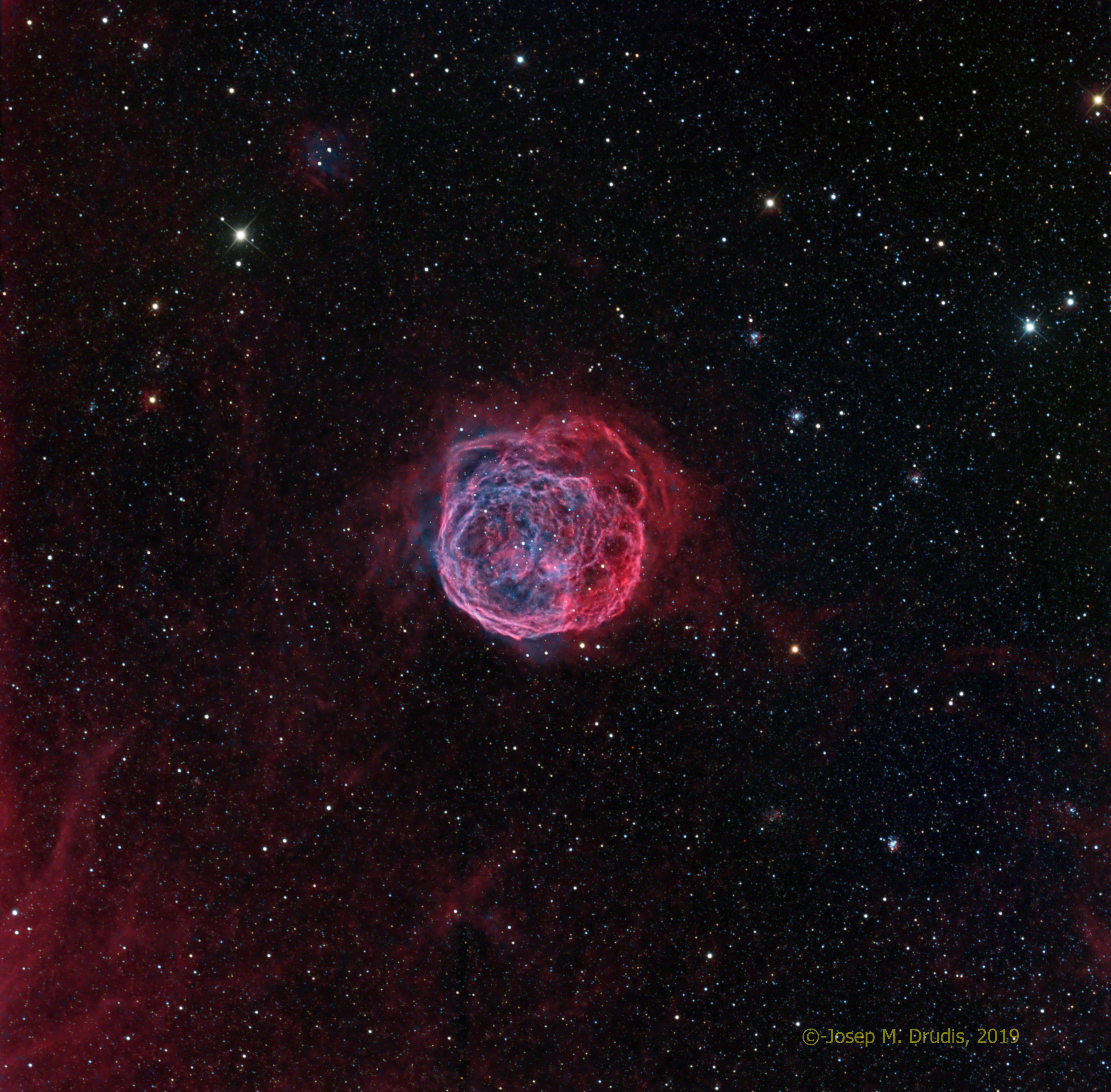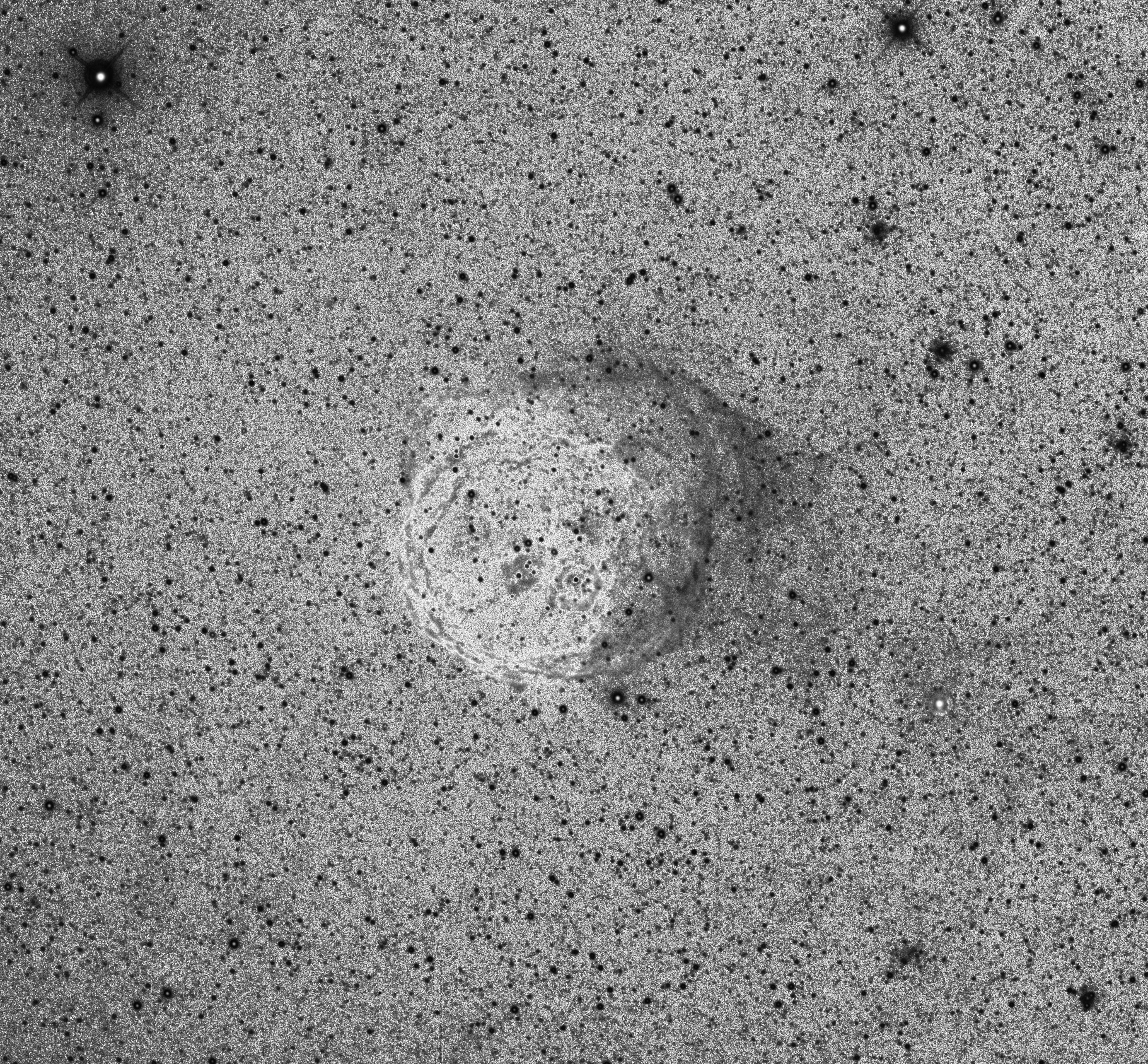
Click here for full resolution image
This image has been selected as Astronomy Picture Of the Day (APOD) on Feb 4th, 2019
N70, a rather peculiar nebula located in the Large Magellanic Cloud (LMC) is very often described as a superbubble. The exact nature of this bubble-like nebula is not fully understood (or at least, decided). As early as 1981, Rosado et al. published an article in Astronomy and Astrophysics giving clear hints (not confirmations) that the shape of N70 was due to shock waves, that “should be attributed to an old supernova explosion”. In 1999, Skelton et al. take this nature for granted but, in 2014, Zhang et al. stated that it is not yet confirmed that N70 be a SNR. What we know, despite its real origin, is that N70’s morphology has been also shaped by the OB association LH114, a tight group of hot O and B stars located at the center of the bubble.
This nebula presents also some interesting parameters. As described in the literature, its NII emission is quite strong, comparable with its Halpha emission, what is consistent with its potential SNR origin. What is amazing, though, is that this nebula is quite bright in SII. Apparently, the SII/Ha ratio increases from the center to the external wisps. In order to be able to confirm all this, this image was taken with four different 3nm bandpass narrowband filters (Halpha, NII, OIII and SII). From the obtained images, we can confirm that the NII signal is approximately the same as the Halpha (the fact that it was taken with 3nm Halpha, allows to confirm that the NII line was not captured with the Halpha filter, as it would have been the case if a 5nm bandpass filter would have been used instead). Moreover, SII is indeed quite bright, as stated by Zhang. Not only this, its distribution is not restricted only to the external wisps, but mostly to the right lobe (towards NE). The figure below (a negative image of the difference between the SII image and the Halpha image) clearly shows this fact:

The OIII emission is also very distinctive, located in the central bubble and pictured here in greenish-blue. The very faint bluish nebula (also quite rich in Oxygen) located to the lower right of N70 is, up to my knowledge, an uncatalogued nebula.
An image taken by Zhang et al. with the Blanco 4m telescope at Cerro Tololo, and mapping SII to Red and OIII to Green, confirms the previous images. This image, see below, has been rotated to match my image.

N70 taken with the Blanco 4m telescope at Cerro Tololo. Copyright Zhang et al.
Additional Information
Object
Name(s): N70, Henize 70, DEM L301
Type: Emission Nebula and probable SNR.
RA: 05h 43m 21.4s
Dec: -67º 50’ 16.4”
Constellation: Doradus
Size (arcmin): 7×8
Magnitude: +14
Distance: 170,000 ly
Image
Date: 2018-12-22 to 2018-12-28
Location: iTelescope.net, SSO near Coonabarabran, NSW Australia
Size (arcmin): 37×36
Telescope: Planewave CDK 20” f/6.8
Camera: SBIG STX16803 (4096x4096pix)
Guiding: Astrodon MonsterMOAG off-axis guider
Total exposure: 29.5 hours (Ha: 19x30min; NII: 12x30min; OIII: 13x30min; SII: 12x30min; RGB: 18x5min)
Processing: CCDStack, Photoshop CC 2019